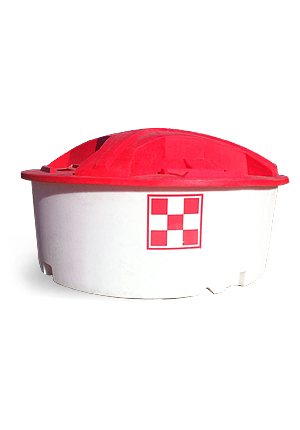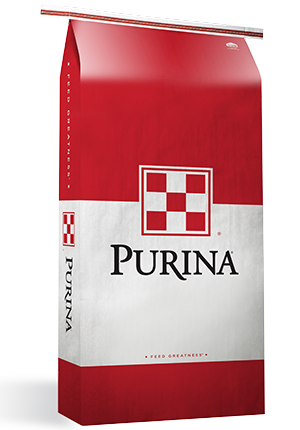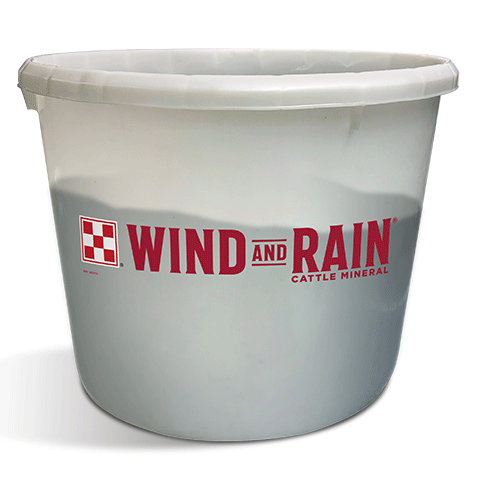
Three Reasons to Select Preconditioned Calves
Management : Weaned Calf
Management : Grower & Finisher
Getting the most bang for your buck at the sale barn is a common goal, but how do you know if you are getting the most value for your money?
Are you buying feeder calves at a low cost, but paying for that investment in performance later on? Preconditioned calves may cost more at sale time but the value-added performance they provide is worth the cost.
Successful preconditioning programs result in calves that have undergone a sound vaccination program, are healthy, bunk and water tank broke, and are ready to perform at the next stage of production. These programs provide value-added calves that are ready to perform in the feedlot.
Transportation stress and being removed from feed and water can cause unwanted weight loss when transitioning to the feedlot. Preconditioned calves are better equipped for these stressful situations and may see less shrink than non-preconditioned calves.
Some studies have shown that non-preconditioned calves shrink between 10 and 15 percent of their body weight, resulting in a loss of 50 pounds on a 500-pound calf. Preconditioned calves shrink approximately half as much, resulting in a loss of only 25 pounds on the same calf.1
A well-planned vaccination program is an important part of preconditioning. Proper vaccinations and quality nutrition can help calves fight off disease challenges, resulting in calves that are less likely to get sick and a potential savings in veterinary costs.
Savings can also be achieved through reduced cost of labor for the treatment of sick calves and decreased death loss. Research shows that calves preconditioned for 45 days before entering the feedlot experience one-third of the morbidity and half of the mortality of non-preconditioned calves.2
Preconditioned calves can have a lower cost of gain at the feedlot with improved rates of gain and feed efficiency. Additional weight gain during the preconditioning phase, as well as reduced shrink during transportation and marketing, can contribute to higher returns from preconditioned calves.3
An efficient nutritional program is also essential to weight gain. Feeding calves a ration balanced for energy, protein, macro and micro minerals and vitamins can show a better response to vaccinations and other health treatments.4
Preconditioning programs that combine a strong vaccination and nutritional plan are essential to promoting feed efficiency down the line.
Does your nutrition program stack up? Find out with a Proof Pays feeding trial.
1 Prevatt, W., Rankins, D and Rodning S. Preconditioning feeder calves makes dollars and sense. Retrieved May 31, 2016 from http://www.aces.edu/timelyinfo/Ag&NatResEcon/2007/November/DAERS_07_15.pdf.
2 Bremer, M. Preconditioning calves: can it add value for you as a cow-calf producer? Retrieved May 31, 2016 from http://beef.unl.edu/preconditioning-calves-can-it-add-value.
3 Beef Cattle Research Council. What is the value of preconditioning calves? Retrieved June 16, 2016 from http://www.beefresearch.ca/fact-sheets/what-is-the-value-of-preconditioning-calves.pdf.
4 Halfman, B. and Stuttgen, S. Pre-conditioning program considerations for feeder cattle. Retrieved May 31, 2016 from http://fyi.uwex.edu/wbic/files/2013/11/general-pre-conditioning.pdf.
Are you buying feeder calves at a low cost, but paying for that investment in performance later on? Preconditioned calves may cost more at sale time but the value-added performance they provide is worth the cost.
Successful preconditioning programs result in calves that have undergone a sound vaccination program, are healthy, bunk and water tank broke, and are ready to perform at the next stage of production. These programs provide value-added calves that are ready to perform in the feedlot.
Three reasons to look for preconditioned calves in your calf selection process:
1. Make the best of a stressful situation
The weaning process can cause high levels of stress in young calves. A new environment, transportation, new feed and water sources, and weather issues can all contribute to increased levels of stress. Preconditioned calves typically handle post-weaning stress better than non-preconditioned calves. They can quickly overcome new environments and stressful events and focus on eating and drinking.Transportation stress and being removed from feed and water can cause unwanted weight loss when transitioning to the feedlot. Preconditioned calves are better equipped for these stressful situations and may see less shrink than non-preconditioned calves.
Some studies have shown that non-preconditioned calves shrink between 10 and 15 percent of their body weight, resulting in a loss of 50 pounds on a 500-pound calf. Preconditioned calves shrink approximately half as much, resulting in a loss of only 25 pounds on the same calf.1
2. Healthier calves mean less treatment
The primary value of preconditioning is to reduce the risk of sickness in calves as they move from the ranch to the stocker or feedyard.A well-planned vaccination program is an important part of preconditioning. Proper vaccinations and quality nutrition can help calves fight off disease challenges, resulting in calves that are less likely to get sick and a potential savings in veterinary costs.
Savings can also be achieved through reduced cost of labor for the treatment of sick calves and decreased death loss. Research shows that calves preconditioned for 45 days before entering the feedlot experience one-third of the morbidity and half of the mortality of non-preconditioned calves.2
3. Preconditioned calves tip the scales
Healthier calves also mean more potential for weight gain. Since preconditioned calves generally get sick less often, they’re able to use more of their consumed nutrients to promote growth as opposed to fighting off disease challenges.Preconditioned calves can have a lower cost of gain at the feedlot with improved rates of gain and feed efficiency. Additional weight gain during the preconditioning phase, as well as reduced shrink during transportation and marketing, can contribute to higher returns from preconditioned calves.3
An efficient nutritional program is also essential to weight gain. Feeding calves a ration balanced for energy, protein, macro and micro minerals and vitamins can show a better response to vaccinations and other health treatments.4
Preconditioning programs that combine a strong vaccination and nutritional plan are essential to promoting feed efficiency down the line.
Does your nutrition program stack up? Find out with a Proof Pays feeding trial.
1 Prevatt, W., Rankins, D and Rodning S. Preconditioning feeder calves makes dollars and sense. Retrieved May 31, 2016 from http://www.aces.edu/timelyinfo/Ag&NatResEcon/2007/November/DAERS_07_15.pdf.
2 Bremer, M. Preconditioning calves: can it add value for you as a cow-calf producer? Retrieved May 31, 2016 from http://beef.unl.edu/preconditioning-calves-can-it-add-value.
3 Beef Cattle Research Council. What is the value of preconditioning calves? Retrieved June 16, 2016 from http://www.beefresearch.ca/fact-sheets/what-is-the-value-of-preconditioning-calves.pdf.
4 Halfman, B. and Stuttgen, S. Pre-conditioning program considerations for feeder cattle. Retrieved May 31, 2016 from http://fyi.uwex.edu/wbic/files/2013/11/general-pre-conditioning.pdf.





